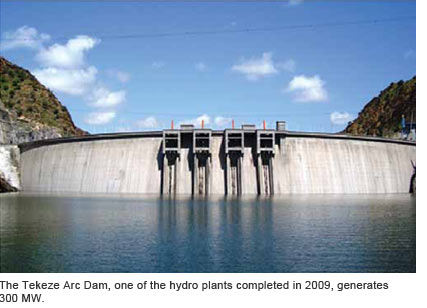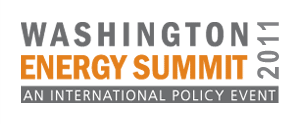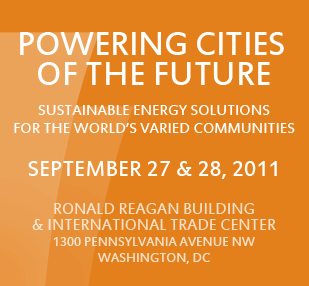By Alemayehu Tegenu
  thiopia has realized that energy is central to its economic development and the reduction of poverty in the country. This may seem like an obvious point, but it has taken fundamental restructuring of the power generation sector, along with an aggressive development program, to put power generation at the center of plans to expand the economy and reduce poverty. thiopia has realized that energy is central to its economic development and the reduction of poverty in the country. This may seem like an obvious point, but it has taken fundamental restructuring of the power generation sector, along with an aggressive development program, to put power generation at the center of plans to expand the economy and reduce poverty.
Fundamental structural reforms were made in 1997 to the Ethiopian Electric Light and Power Authority, the Government of Ethiopia body charged with providing power, with the purpose of enhancing electricity generation, transmission, distribution, sales and other relevant business activities.
Prior to the reform, the public utility operated about 800 MW with an annual electricity production capacity of 35 GWh/year.
The reforms led to an aggressive power sector development program launched in 2004. During the 2004-2010 period, Ethiopia undertook the construction of five major hydro plants and one wind power project with a total capacity of 3200 MW.
To date, three of the hydro plants with a total capacity of 1,180 MW have been completed and connected to the grid. This has resulted in a 145 percent increase in the country’s total generating capacity, which has risen from 800 MW to 2060 MW.
At the same time, electrification of the country has been developing apace.
The number of electrified towns and villages has reached 5,168 out of a total of about 7,000, with the number of customers growing from 250,000 to 1.85 million. This means access to electricity in Ethiopia grew to 41 percent of the population from a previous level of just 16 percent.
Two strategies have been employed for the expansion of the power sector. The first is based on increasing largeand medium-scale, gridbased plants, and the second on small-scale, stand-alone/ mini grid renewable energy projects.
There are a number of tangible positive advantages that large-scale, grid-based hydropower development schemes have brought for Ethiopia. These are:
(1) The Ethiopian hydropower resource is developed at cheaper investment costs compared to similar sized projects elsewhere, offering a reliable base for access expansion and power system development;
(2) Larger units have the advantage of distributing costs across wider numbers of users without directly levying heavy tariffs on new customers;
(3) Large units enable the delivery of affordable modern energy services to lowincome rural communities;
(4) Large plants mostly deliver good economies of scale as their planning, operation and management are done cost-effectively;
(5) Experience has shown that grid-based renewable energy tariffs tend to be cheaper than what private smallscale power providers would charge;
(6) The overall system appears to be more reliable as a failure in one location can be compensated for through the backup capacities of the whole network.
Ethiopia plans to increase its current 2060 MW capacity to 8,000 MW in the next five years, and to reach 16,000 MW in the coming ten years, through tapping its huge renewable resources of hydro, wind, geothermal and solar power.
Another remarkable achievement is in the power transmission, sub-station and distribution infrastructure development.
In the past five years more than 4,000 kilometers of 400 kV and 66 kV transmission lines have been built. This represents a 142 percent increase in the total capacity of transmission lines, and an expansion of the distribution network from 25,000 km to 126,000 km.
Currently, 47 percent of the population has access to electricity.
Ethiopia has also distributed 10 million compact fluorescent light bulbs to consumers throughout the country so that they can see for themselves the energy efficiency of these products.
The Energy Agency established in 1997 has been mainly involved in issuing electricity investment and operation licenses for both government and private entities in the electricity sector. According to the Agency, it has issued some 45 investment and several operational licenses for projects with an initial capital of $4 billion.
Ethiopia believes strongly in the importance of regional interconnection, and it is pursuing a strategy for accelerating cross-border electricity trading with the neighboring and nearby countries. In this way, Ethiopia’s great hydro resources are contributing to regional economic development.
Regional integration of energy generation and distribution is important for Africa, where many of the smaller countries lack economies of scale in the sector, holding them back from economic expansion.
The Ethiopia-Sudan and Ethiopia-Djibouti interconnections study phases have been completed and these power lines are now at an early stage of construction.
Also, after several highlevel negotiations, Ethiopia and Kenya have launched a feasibility study for the interconnection of the two countries’ power systems.
Alemayehu Tegenu is Ethiopia’s minister of water and energy.
|


